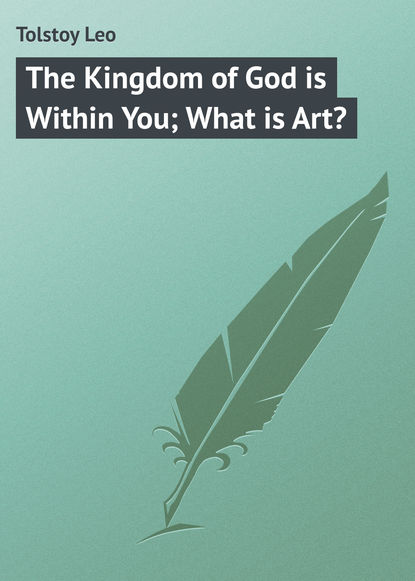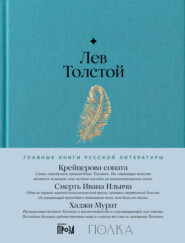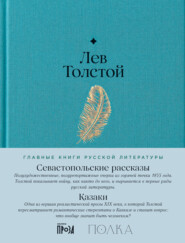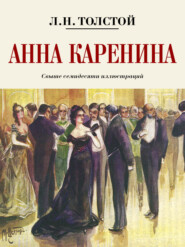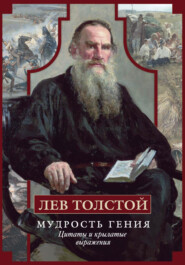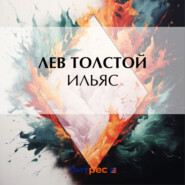По всем вопросам обращайтесь на: info@litportal.ru
(©) 2003-2024.
✖
The Kingdom of God is Within You; What is Art?
Настройки чтения
Размер шрифта
Высота строк
Поля
All the existing æsthetic standards are built on this plan. Instead of giving a definition of true art, and then deciding what is and what is not good art by judging whether a work conforms or does not conform to the definition, a certain class of works, which for some reason please a certain circle of people, is accepted as being art, and a definition of art is then devised to cover all these productions. I recently came upon a remarkable instance of this method in a very good German work, "The History of Art in the Nineteenth Century," by Muther. Describing the pre-Raphaelites, the Decadents and the Symbolists (who are already included in the canon of art), he not only does not venture to blame their tendency, but earnestly endeavors to widen his standard so that it may include them all, they appearing to him to represent a legitimate reaction from the excesses of realism. No matter what insanities appear in art, when once they find acceptance among the upper classes of our society, a theory is quickly invented to explain and sanction them; just as if there had never been periods in history when certain special circles of people recognized and approved false, deformed, and insensate art which subsequently left no trace and has been utterly forgotten. And to what lengths the insanity and deformity of art may go, especially when, as in our days, it knows that it is considered infallible, may be seen by what is being done in the art of our circle to-day.
So that the theory of art, founded on beauty, expounded by æsthetics, and, in dim outline, professed by the public, is nothing but the setting up as good of that which has pleased and pleases us, i. e. pleases a certain class of people.
In order to define any human activity, it is necessary to understand its sense and importance. And, in order to do that, it is primarily necessary to examine that activity in itself, in its dependence on its causes, and in connection with its effects, and not merely in relation to the pleasure we can get from it.
If we say that the aim of any activity is merely our pleasure, and define it solely by that pleasure, our definition will evidently be a false one. But this is precisely what has occurred in the efforts to define art. Now, if we consider the food question, it will not occur to anyone to affirm that the importance of food consists in the pleasure we receive when eating it. Every one understands that the satisfaction of our taste cannot serve as a basis for our definition of the merits of food, and that we have therefore no right to presuppose that the dinners with cayenne pepper, Limburg cheese, alcohol, etc., to which we are accustomed and which please us, form the very best human food.
And in the same way, beauty, or that which pleases us, can in no sense serve as the basis for the definition of art; nor can a series of objects which afford us pleasure serve as the model of what art should be.
To see the aim and purpose of art in the pleasure we get from it, is like assuming (as is done by people of the lowest moral development, e. g. by savages) that the purpose and aim of food is the pleasure derived when consuming it.
Just as people who conceive the aim and purpose of food to be pleasure cannot recognize the real meaning of eating, so people who consider the aim of art to be pleasure cannot realize its true meaning and purpose, because they attribute to an activity, the meaning of which lies in its connection with other phenomena of life, the false and exceptional aim of pleasure. People come to understand that the meaning of eating lies in the nourishment of the body only when they cease to consider that the object of that activity is pleasure. And it is the same with regard to art. People will come to understand the meaning of art only when they cease to consider that the aim of that activity is beauty, i. e. pleasure. The acknowledgment of beauty (i. e. of a certain kind of pleasure received from art) as being the aim of art, not only fails to assist us in finding a definition of what art is, but, on the contrary, by transferring the question into a region quite foreign to art (into metaphysical, psychological, physiological, and even historical discussions as to why such a production pleases one person, and such another displeases or pleases some one else), it renders such definition impossible. And since discussions as to why one man likes pears and another prefers meat do not help toward finding a definition of what is essential in nourishment, so the solution of questions of taste in art (to which the discussions on art involuntarily come), not only does not help to make clear what this particular human activity which we call art really consists in, but renders such elucidation quite impossible, until we rid ourselves of a conception which justifies every kind of art, at the cost of confusing the whole matter.
To the question, What is this art, to which is offered up the labor of millions, the very lives of men, and even morality itself? we have extracted replies from the existing æsthetics, which all amount to this that the aim of art is beauty, that beauty is recognized by the enjoyment it gives, and that artistic enjoyment is a good and important thing, because it is enjoyment. In a word, that enjoyment is good because it is enjoyment. Thus, what is considered the definition of art is no definition at all, but only a shuffle to justify existing art. Therefore, however strange it may seem to say so, in spite of the mountains of books written about art, no exact definition of art has been constructed. And the reason of this is that the conception of art has been based on the conception of beauty.
CHAPTER V
What is art, if we put aside the conception of beauty, which confuses the whole matter? The latest and most comprehensible definitions of art, apart from the conception of beauty, are the following: (1 a) Art is an activity arising even in the animal kingdom, and springing from sexual desire and the propensity to play (Schiller, Darwin, Spencer), and (1 b) accompanied by a pleasurable excitement of the nervous system (Grant Allen). This is the physiological-evolutionary definition. (2) Art is the external manifestation, by means of lines, colors, movements, sounds, or words, of emotions felt by man (Véron). This is the experimental definition. According to the very latest definition (Sully), (3) Art is "the production of some permanent object or passing action, which is fitted, not only to supply an active enjoyment to the producer, but to convey a pleasurable impression to a number of spectators or listeners, quite apart from any personal advantage to be derived from it."
Notwithstanding the superiority of these definitions to the metaphysical definitions which depended on the conception of beauty, they are yet far from exact. (1 a) The first, the physiological-evolutionary definition, is inexact, because, instead of speaking about the artistic activity itself, which is the real matter in hand, it treats of the derivation of art. The modification of it (1 b), based on the physiological effects on the human organism, is inexact, because within the limits of such definition many other human activities can be included, as has occurred in the neo-æsthetic theories, which reckon as art the preparation of handsome clothes, pleasant scents, and even of victuals.
The experimental definition (2), which makes art consist in the expression of emotions, is inexact, because a man may express his emotions by means of lines, colors, sounds, or words, and yet may not act on others by such expression; and then the manifestation of his emotions is not art.
The third definition (that of Sully) is inexact, because in the production of objects or actions affording pleasure to the producer and a pleasant emotion to the spectators or hearers apart from personal advantage may be included the showing of conjuring tricks or gymnastic exercises, and other activities which are not art. And, further, many things, the production of which does not afford pleasure to the producer, and the sensation received from which is unpleasant, such as gloomy, heartrending scenes in a poetic description or a play, may nevertheless be undoubted works of art.
The inaccuracy of all these definitions arises from the fact that in them all (as also in the metaphysical definitions) the object considered is the pleasure art may give, and not the purpose it may serve in the life of man and of humanity.
In order correctly to define art, it is necessary, first of all, to cease to consider it as a means to pleasure, and to consider it as one of the conditions of human life. Viewing it in this way, we cannot fail to observe that art is one of the means of intercourse between man and man.
Every work of art causes the receiver to enter into a certain kind of relationship both with him who produced, or is producing, the art, and with all those who, simultaneously, previously, or subsequently, receive the same artistic impression.
Speech, transmitting the thoughts and experiences of men, serves as a means of union among them, and art acts in a similar manner. The peculiarity of this latter means of intercourse, distinguishing it from intercourse by means of words, consists in this, that whereas by words a man transmits his thoughts to another, by means of art he transmits his feelings.
The activity of art is based on the fact that a man, receiving through his sense of hearing or sight another man's expression of feeling, is capable of experiencing the emotion which moved the man who expressed it. To take the simplest example: one man laughs, and another, who hears, becomes merry; or a man weeps, and another, who hears, feels sorrow. A man is excited or irritated, and another man, seeing him, comes to a similar state of mind. By his movements, or by the sounds of his voice, a man expresses courage and determination, or sadness and calmness, and this state of mind passes on to others. A man suffers, expressing his sufferings by groans and spasms, and this suffering transmits itself to other people; a man expresses his feeling of admiration, devotion, fear, respect, or love to certain objects, persons, or phenomena, and others are infected by the same feelings of admiration, devotion, fear, respect, or love to the same objects, persons, and phenomena.
And it is on this capacity of man to receive another man's expression of feeling, and experience those feelings himself, that the activity of art is based.
If a man infects another or others, directly, immediately, by his appearance, or by the sounds he gives vent to at the very time he experiences the feeling; if he causes another man to yawn when he himself cannot help yawning, or to laugh or cry when he himself is obliged to laugh or cry, or to suffer when he himself is suffering – that does not amount to art.
Art begins when one person, with the object of joining another or others to himself in one and the same feeling, expresses that feeling by certain external indications. To take the simplest example: a boy, having experienced, let us say, fear on encountering a wolf, relates that encounter; and, in order to evoke in others the feeling he has experienced, describes himself, his condition before the encounter, the surroundings, the wood, his own light-heartedness, and then the wolf's appearance, its movements, the distance between himself and the wolf, etc. All this, if only the boy, when telling the story, again experiences the feelings he had lived through and infects the hearers and compels them to feel what the narrator had experienced, is art. If even the boy had not seen a wolf but had frequently been afraid of one, and if, wishing to evoke in others the fear he had felt, he invented an encounter with a wolf, and recounted it so as to make his hearers share the feelings he experienced when he feared the wolf, that also would be art. And just in the same way it is art if a man, having experienced either the fear of suffering or the attraction of enjoyment (whether in reality or in imagination), expresses these feelings on canvas or in marble so that others are infected by them. And it is also art if a man feels or imagines to himself feelings of delight, gladness, sorrow, despair, courage, or despondency, and the transition from one to another of these feelings, and expresses these feelings by sounds, so that the hearers are infected by them, and experience them as they were experienced by the composer.
The feelings with which the artist infects others may be most various, – very strong or very weak, very important or very insignificant, very bad or very good: feelings of love for native land, self-devotion and submission to fate or to God expressed in a drama, raptures of lovers described in a novel, feelings of voluptuousness expressed in a picture, courage expressed in a triumphal march, merriment evoked by a dance, humor evoked by a funny story, the feeling of quietness transmitted by an evening landscape or by a lullaby, or the feeling of admiration evoked by a beautiful arabesque – it is all art.
If only the spectators or auditors are infected by the feelings which the author has felt, it is art.
To evoke in oneself a feeling one has once experienced, and having evoked it in oneself, then, by means of movements, lines, colors, sounds, or forms expressed in words, so to transmit that feeling that others may experience the same feeling – this is the activity of art.
Art is a human activity, consisting in this, that one man consciously, by means of certain external signs, hands on to others feelings he has lived through, and that other people are infected by these feelings, and also experience them.
Art is not, as the metaphysicians say, the manifestation of some mysterious Idea of beauty, or God; it is not, as the æsthetical physiologists say, a game in which man lets off his excess of stored-up energy; it is not the expression of man's emotions by external signs; it is not the production of pleasing objects; and, above all, it is not pleasure; but it is a means of union among men, joining them together in the same feelings, and indispensable for the life and progress toward well-being of individuals and of humanity.
As, thanks to man's capacity to express thoughts by words, every man may know all that has been done for him in the realms of thought by all humanity before his day, and can, in the present, thanks to this capacity to understand the thoughts of others, become a sharer in their activity, and can himself hand on to his contemporaries and descendants the thoughts he has assimilated from others, as well as those which have arisen within himself; so, thanks to man's capacity to be infected with the feelings of others by means of art, all that is being lived through by his contemporaries is accessible to him, as well as the feelings experienced by men thousands of years ago, and he has also the possibility of transmitting his own feelings to others.
If people lacked this capacity to receive the thoughts conceived by the men who preceded them, and to pass on to others their own thoughts, men would be like wild beasts, or like Kaspar Hauser.[96 - "The foundling of Nuremberg," found in the market-place of that town on 26th May, 1828, apparently some sixteen years old. He spoke little, and was almost totally ignorant even of common objects. He subsequently explained that he had been brought up in confinement underground, and visited by only one man, whom he saw but seldom. – Tr.]
And if men lacked this other capacity of being infected by art, people might be almost more savage still, and, above all, more separated from, and more hostile to, one another.
And therefore the activity of art is a most important one, as important as the activity of speech itself, and as generally diffused.
We are accustomed to understand art to be only what we hear and see in theaters, concerts, and exhibitions; together with buildings, statues, poems, novels… But all this is but the smallest part of the art by which we communicate with each other in life. All human life is filled with works of art of every kind, – from cradle-song, jest, mimicry, the ornamentation of houses, dress, and utensils, up to church services, buildings, monuments, and triumphal processions. It is all artistic activity. So that by art, in the limited sense of the word, we do not mean all human activity transmitting feelings, but only that part which we for some reason select from it and to which we attach special importance.
This special importance has always been given by all men to that part of this activity which transmits feelings flowing from their religious perception, and this small part of art they have specifically called art, attaching to it the full meaning of the word.
That was how men of old – Socrates, Plato, and Aristotle – looked on art. Thus did the Hebrew prophets and the ancient Christians regard art; thus it was, and still is, understood by the Mahommedans, and thus is it still understood by religious folk among our own peasantry.
Some teachers of mankind – as Plato in his "Republic," and people such as the primitive Christians, the strict Mahommedans, and the Buddhists – have gone so far as to repudiate all art.
People viewing art in this way (in contradiction to the prevalent view of to-day, which regards any art as good if only it affords pleasure) considered, and consider, that art (as contrasted with speech, which need not be listened to) is so highly dangerous in its power to infect people against their wills, that mankind will lose far less by banishing all art than by tolerating each and every art.
Evidently such people were wrong in repudiating all art, for they denied that which cannot be denied, – one of the indispensable means of communication, without which mankind could not exist. But not less wrong are the people of civilized European society of our class and day, in favoring any art if it but serves beauty, i. e. gives people pleasure.
Formerly, people feared lest among the works of art there might chance to be some causing corruption, and they prohibited art altogether. Now, they only fear lest they should be deprived of any enjoyment art can afford, and patronize any art. And I think the last error is much grosser than the first, and that its consequences are far more harmful.
CHAPTER VI
But how could it happen that that very art, which in ancient times was merely tolerated (if tolerated at all), should have come, in our times, to be invariably considered a good thing if only it affords pleasure?
It has resulted from the following causes. The estimation of the value of art (i. e. of the feelings it transmits) depends on men's perception of the meaning of life; depends on what they consider to be the good and the evil of life. And what is good and what is evil is defined by what are termed religions.
Humanity unceasingly moves forward from a lower, more partial, and obscure understanding of life, to one more general and more lucid. And in this, as in every movement, there are leaders, – those who have understood the meaning of life more clearly than others, – and of these advanced men there is always one who has, in his words and by his life, expressed this meaning more clearly, accessibly, and strongly than others. This man's expression of the meaning of life, together with those superstitions, traditions, and ceremonies which usually form themselves round the memory of such a man, is what is called a religion. Religions are the exponents of the highest comprehension of life accessible to the best and foremost men at a given time in a given society; a comprehension toward which, inevitably and irresistibly, all the rest of that society must advance. And therefore only religions have always served, and still serve, as bases for the valuation of human sentiments. If feelings bring men nearer the ideal their religion indicates, if they are in harmony with it and do not contradict it, they are good; if they estrange men from it and oppose it, they are bad.
If the religion places the meaning of life in worshiping one God and fulfilling what is regarded as His will, as was the case among the Jews, then the feelings flowing from love to that God, and to His law, successfully transmitted through the art of poetry by the prophets, by the psalms, or by the epic of the book of Genesis, is good, high art. All opposing that, as, for instance, the transmission of feelings of devotion to strange gods, or of feelings incompatible with the law of God, would be considered bad art. Or if, as was the case among the Greeks, the religion places the meaning of life in earthly happiness, in beauty and in strength, then art successfully transmitting the joy and energy of life would be considered good art, but art which transmitted feelings of effeminacy or despondency would be bad art. If the meaning of life is seen in the well-being of one's nation, or in honoring one's ancestors and continuing the mode of life led by them, as was the case among the Romans and the Chinese respectively, then art transmitting feelings of joy at sacrificing one's personal well-being for the common weal, or at exalting one's ancestors and maintaining their traditions, would be considered good art, but art expressing feelings contrary to this would be regarded as bad. If the meaning of life is seen in freeing oneself from the yoke of animalism, as is the case among the Buddhists, then art successfully transmitting feelings that elevate the soul and humble the flesh will be good art, and all that transmits feelings strengthening the bodily passions will be bad art.
In every age, and in every human society, there exists a religious sense, common to that whole society, of what is good and what is bad, and it is this religious conception that decides the value of the feelings transmitted by art. And therefore, among all nations, art which transmitted feelings considered to be good by this general religious sense was recognized as being good and was encouraged; but art which transmitted feelings considered to be bad by this general religious conception, was recognized as being bad, and was rejected. All the rest of the immense field of art by means of which people communicate one with another, was not esteemed at all, and was only noticed when it ran counter to the religious conception of its age, and then merely to be repudiated. Thus it was among all nations, – Greeks, Jews, Indians, Egyptians, and Chinese, – and so it was when Christianity appeared.
The Christianity of the first centuries recognized as productions of good art only legends, lives of saints, sermons, prayers, and hymn-singing, evoking love of Christ, emotion at His life, desire to follow His example, renunciation of worldly life, humility, and the love of others; all productions transmitting feelings of personal enjoyment they considered to be bad, and therefore rejected: for instance, tolerating plastic representations only when they were symbolical, they rejected all the pagan sculptures.
This was so among the Christians of the first centuries, who accepted Christ's teaching, if not quite in its true form, at least not in the perverted, paganized form in which it was accepted subsequently.
But besides this Christianity, from the time of the wholesale conversion of nations by order of the authorities, as in the days of Constantine, Charlemagne, and Vladimir, there appeared another, a Church Christianity, which was nearer to paganism than to Christ's teaching. And this Church Christianity, in accordance with its own teaching, estimated quite otherwise the feelings of people and the productions of art which transmitted those feelings.
This Church Christianity not only did not acknowledge the fundamental and essential positions of true Christianity, – the immediate relationship of each man to the Father, the consequent brotherhood and equality of all men, and the substitution of humility and love in place of every kind of violence, – but, on the contrary, having set up a heavenly hierarchy similar to the pagan mythology, and having introduced the worship of Christ, of the Virgin, of angels, of apostles, of saints, and of martyrs, and not only of these divinities themselves, but also of their images, it made blind faith in the Church and its ordinances the essential point of its teaching.
However foreign this teaching may have been to true Christianity; however degraded, not only in comparison with true Christianity, but even with the life-conception of Romans such as Julian and others, – it was, for all that, to the barbarians who accepted it, a higher doctrine than their former adoration of gods, heroes, and good and bad spirits. And therefore this teaching was a religion to them, and on the basis of that religion the art of the time was assessed. And art transmitting pious adoration of the Virgin, Jesus, the saints and the angels, a blind faith in and submission to the Church, fear of torments and hope of blessedness in a life beyond the grave, was considered good; all art opposed to this was considered bad.
The teaching on the basis of which this art arose was a perversion of Christ's teaching, but the art which sprang up on this perverted teaching was nevertheless a true art, because it corresponded to the religious view of life held by the people among whom it arose.
The artists of the Middle Ages, vitalized by the same source of feeling – religion – as the mass of the people, and transmitting, in architecture, sculpture, painting, music, poetry or drama, the feelings and states of mind they experienced, were true artists; and their activity, founded on the highest conceptions accessible to their age and common to the entire people, though, for our times a mean art, was, nevertheless a true one, shared by the whole community.





